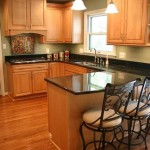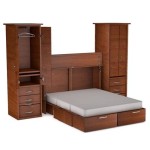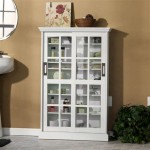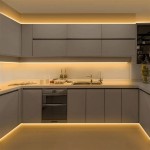Router Bits for Raised Panel Cabinet Doors: A Comprehensive Guide
Raised panel cabinet doors are a hallmark of quality woodworking, lending an air of sophistication and craftsmanship to kitchens, bathrooms, and other areas of the home. Achieving professional-looking results hinges not only on skill but also on selecting the appropriate router bits. This article provides a detailed overview of the different types of router bits used in creating raised panel doors, their applications, and factors to consider when making a purchase.
Understanding the Components of a Raised Panel Cabinet Door
A raised panel cabinet door typically consists of five components: the panel itself, the two stiles (vertical frame members), and the two rails (horizontal frame members). Each component requires specifically shaped cuts, usually created using a router and appropriate router bits. The panel is the central decorative element, featuring a raised profile that adds depth and visual interest. The stiles and rails form the frame, providing structural integrity and a means of attaching the door to the cabinet.
The joinery used to connect the stiles and rails is often a mortise-and-tenon joint, but a simpler cope-and-stick joint is also commonly used. The cope-and-stick method relies on matching profiles cut into the stiles and rails, providing a strong and visually appealing connection. The router bits employed to create these profiles are often sold in matched sets, ensuring a perfect fit.
Types of Router Bits for Raised Panel Doors
A wide array of router bits are available for crafting raised panel cabinet doors. These bits can be categorized based on their specific function within the door-making process, and their profile. Understanding these categories is crucial for selecting the right bits for a particular project.
*Raised Panel Bits:
These bits are designed to create the decorative raised profile on the door panel. They are typically large in diameter and feature intricate cutting edges. Raised panel bits come in various profiles, including traditional ogee, cove, and Roman ogee shapes. Some specialized bits even create a cathedral-style arch at the top of the panel. The shank of the bit will be either 1/2 inch or 1/4 inch (more information on this later in the article). *Cope and Stick Bits:
These bits are used in matched sets to create the cope-and-stick joinery for the stiles and rails. One bit (the "stick" bit) cuts the profile on the inside edge of the stiles, while the other bit (the "cope" bit) cuts a matching profile on the ends of the rails. When assembled, these profiles interlock to form a strong and visually seamless joint. *Edge Forming Bits:
While not strictly necessary for constructing the basic raised panel door, edge forming bits can add an extra touch of detail to the stiles and rails. These bits create decorative profiles along the outer edges of the frame members, enhancing the overall aesthetic appeal. *Reversible Glue Joint Router Bit:
These produce a strong, self-aligning glue joint. They can be used for panels or for joining the face frame of cabinet doors. These are very popular and versatile for cabinet making.Key Considerations When Choosing Router Bits
Selecting the right router bits is crucial for achieving professional-quality results. Several factors should be considered when making a purchase, including the type of wood being used, the desired profile, the size of the router, and the quality of the bit itself.
*Wood Type:
The type of wood being worked with will influence the choice of router bit. Hardwoods require sharper bits and slower feed rates than softwoods. Some woods, such as cherry, are prone to tearout if not cut with the grain and with a sharp bit. Experiment with scrap pieces to find the best feed rate and bit settings. *Profile Selection:
The desired profile of the raised panel and the cope-and-stick joint is a matter of personal preference and the overall design aesthetic. Consider the style of the cabinet doors and the surrounding decor when selecting profiles. Samples of different profiles can be created using scrap wood to visualize the final result. *Router Size and Shank Size:
Routers come in various sizes, with varying horsepower ratings. Larger raised panel bits require a powerful router, preferably one with a 1/2-inch collet. Smaller routers with 1/4-inch collets may struggle to handle these bits safely and effectively. Using a 1/2-inch shank router bit is recommended for raised panel doors, especially for the large raised panel bits themselves. 1/4-inch shank router bits may be suitable for smaller edge forming bits or detail work. *Bit Quality and Material:
Router bits are typically made from high-speed steel (HSS) or carbide. Carbide bits are more expensive than HSS bits, but they offer superior durability and cutting performance, especially when working with hardwoods. Solid carbide bits are the most expensive but offer the longest lifespan and the cleanest cuts. Invest in high-quality bits from reputable manufacturers to ensure consistent performance and longevity. Look for bits with anti-kickback designs for enhanced safety. *RPM Speed Rating:
Router bits are designed to work at specific rotation speeds. Over-speeding the bit can lead to premature wear or even breakage, while under-speeding can result in poor cut quality. Always follow the manufacturer's recommendations for RPM speed ratings. Variable-speed routers are highly recommended and allow for precise control over the cutting speed.Techniques for Safe and Effective Router Use
Safety is paramount when working with routers. Router bits spin at extremely high speeds, and improper use can result in serious injury. Adherence to the following safety guidelines is essential.
*Wear Safety Glasses and Hearing Protection:
Eye and ear protection are vital to protect against flying debris and damaging noise levels. *Use a Router Table:
A router table provides a stable and controlled platform for routing, minimizing the risk of accidents. It also allows for the use of both hands to guide the workpiece. *Always Feed Against the Rotation of the Bit:
Feeding the workpiece in the wrong direction can cause the router to grab the wood and kick it back violently. Always feed against the rotation of the bit. *Use Push Sticks or Pads:
When routing small or awkwardly shaped pieces, use push sticks or pads to keep your hands away from the bit. *Make Multiple Light Passes:
Instead of trying to remove too much material in a single pass, make multiple light passes. This will reduce the strain on the router and the bit, resulting in cleaner cuts. *Inspect Bits Regularly:
Before each use, inspect the router bit for signs of damage or wear. Replace damaged or dull bits immediately. *Unplug the Router When Changing Bits:
Always unplug the router before changing bits to prevent accidental activation.Maintenance and Storage of Router Bits
Proper maintenance and storage are essential for extending the lifespan of router bits. Regular cleaning and sharpening will ensure optimal performance, while proper storage will protect the bits from damage.
*Cleaning:
After each use, clean the router bit with a brush and solvent to remove any accumulated resin or pitch. This will prevent the buildup of residue that can impede performance. *Sharpening:
Sharpening router bits is necessary to maintain their cutting edge. HSS bits can be sharpened with a honing stone or a specialized sharpening tool. Carbide bits require specialized sharpening equipment and should be sharpened by a professional. *Storage:
Store router bits in a dry, protected environment to prevent rust and corrosion. Individual bit cases or a dedicated router bit storage system are recommended.Addressing Common Challenges in Raised Panel Door Creation
Even with the right tools and techniques, creating raised panel doors can present certain challenges. Understanding these challenges and their solutions can help ensure a successful project.
*Tearout:
Tearout occurs when the wood fibers are torn out during routing, resulting in a ragged edge. To prevent tearout, use sharp bits, make light passes, and feed the workpiece slowly. Climb cutting, with careful attention, can sometimes reduce tearout but requires extra caution since the router will try to pull the material through. *Burning:
Burning occurs when the bit overheats and scorches the wood. This can be caused by dull bits, slow feed rates, or excessive pressure. Use sharp bits, increase feed rates, and reduce pressure. *Chipping:
Chipping occurs when small pieces of wood break off along the edges of the cut. This can be caused by brittle wood, dull bits, or improper feed direction. Use sharp bits, support the workpiece with a backer board, and feed against the grain. *Uneven Profiles:
Uneven profiles can be caused by inconsistent feed pressure, a wobbly router table, or worn bearings in the router. Maintain consistent feed pressure, ensure the router table is stable, and replace worn bearings promptly. *Misaligned Joints:
Misaligned joints occur when the cope and stick profiles do not match perfectly or the mortise-and-tenon joints are not square. Double-check the router bit setup, use accurate measuring tools, and carefully assemble the joints.The selection of appropriate router bits and the application of sound woodworking techniques are essential for creating beautiful and durable raised panel cabinet doors. By carefully considering the factors outlined in this article, woodworkers can confidently approach this challenging but rewarding project.

3pc Set 1 2 Shank Raised Panel Cabinet Door Router Bit Woodwork Cutter Tool Hot Ebay

Raised Panel Ogee Bit 90 501

Round Over Rail Stile With Cove Panel Raiser 3 Bit Router Set

Router Bit Sets Door Window Shaker 3 Raised Panel Cabinet Set With Back Cutter Raiser 1 2 Shank Yonico 12350

Raised Panel Cabinet Door Router Bits Set With Undercutter Mlcs Premium

Yonico Raised Panel Cabinet Door 1 2 In Shank Carbide Tipped Router Bit Set 4 Piece 12432 The Home

Mlcs Shaker Cabinet Maker Router Bits Set With Back Cutter

Router Bits For Making Raised Panel Cabinet Doors Csl Tools Ie

Amana Tool Announces Insert Router Bit Series For Creating Simulated Raised Panel Cabinet Doors From Mdf

Round Over Ogee 5 Bit Raised Panel Cabinet Door Router Set 1 2 Shank Yonico 12536








